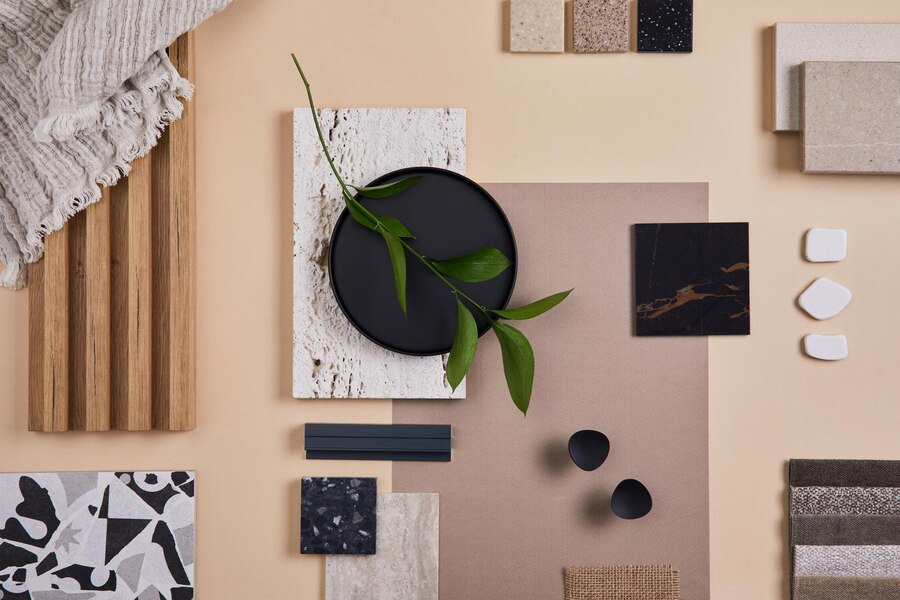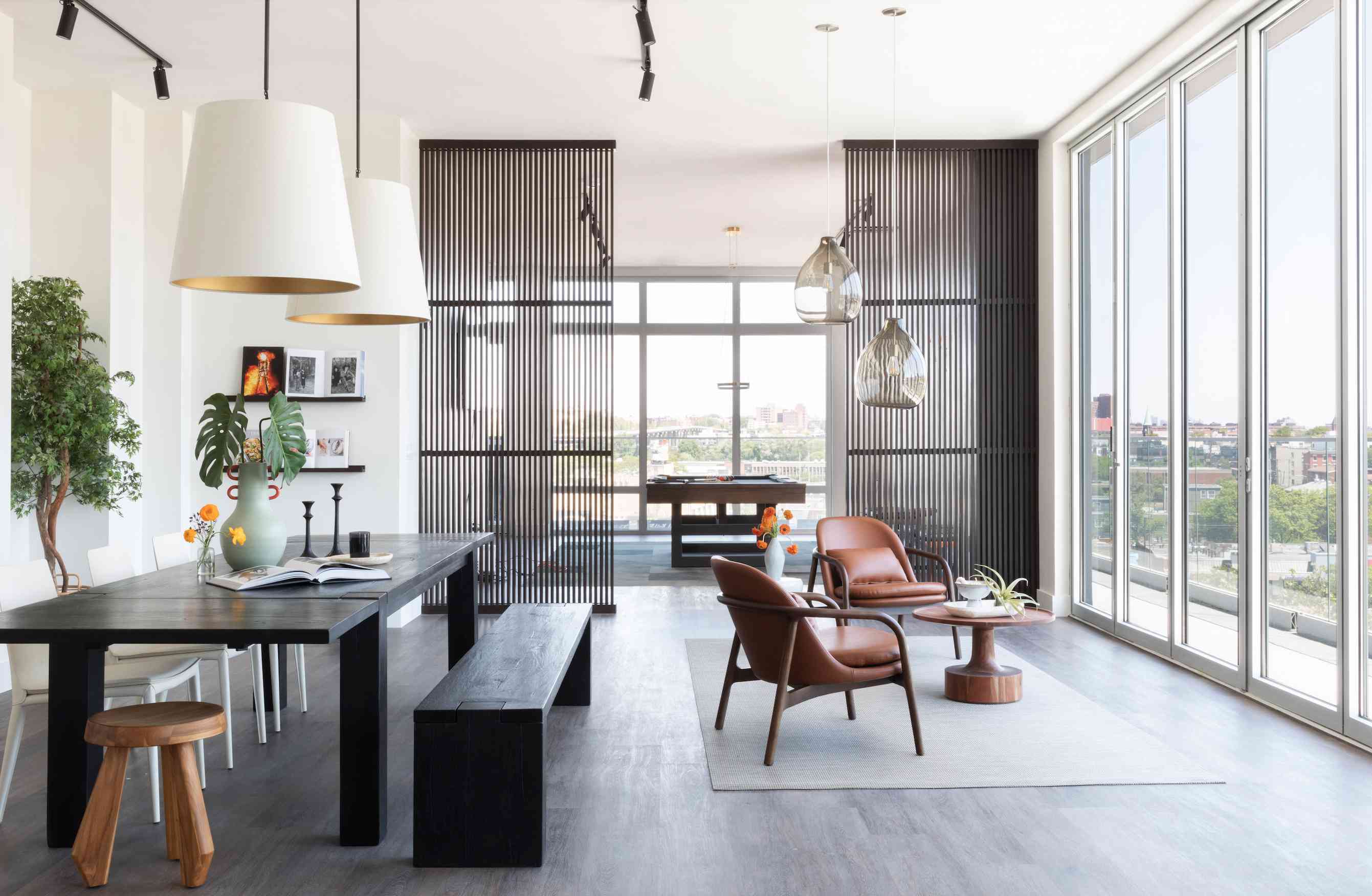“A problem is a chance for you to do your best.”
-Duke Ellington
Interior design is a captivating blend of creativity, functionality, and aesthetics. However, with every project, there come challenges that interior designers must face head-on. Despite being occasionally daunting, these challenges offer chances to demonstrate innovation and expertise. In this blog, we’ll explore common interior design challenges and provide insightful tips on how to conquer them.
1. Space Constraints: Making Every Inch Count
Mismatched colours and conflicting materials can disrupt a design’s cohesiveness. To address this challenge:
- Create mood boards that visualize the colour palette and material combinations.
- Choose a dominant colour and complement it with supporting hues.
- When combining materials, ensure they share a common theme, whether in texture, finish, or overall style.
Colour and material coordination is essential for the design of any space, whether it’s a house, office or website. The cohesiveness of the design may be disturbed by uneven colours and irregular materials, which can create a sense of confusion. A mood board allows you to look at the desired image and experiment with various combinations of colours and materials. It is helpful to select a dominant colour, which serves as the scheme’s foundation, once you have an overall concept of what style you are going for.
The selection of elements that share a shared theme is essential when they are combined. It can be of textures, finishes or a complete style. It is also necessary to consider the overall style of a room when selecting colours and materials. Consider warm, subdued colours and natural materials, for example, when it comes to the design of an old house. One can make a design that’s elegant and pleasant, just with the proper planning.
2. Color and Material Coordination: Achieving Harmony
Mismatched colors and conflicting materials can disrupt a design’s cohesiveness. To address this challenge, create mood boards that visualize the color palette and material combinations. Choose a dominant color and complement it with supporting hues. When combining materials, ensure they share a common theme, whether in texture, finish, or overall style.
The colour and material coordination is essential for the design of any space, whether it’s a house, office or website. The cohesiveness of the design may be disturbed by uneven colors and irregular materials, which can create a sense of confusion. A mood board allows you to take a look at the desired image and experiment with various combinations of colors and materials. It is useful to select a dominant color, which serves as the foundation of scheme once have an overall concept of what style are going for.
The selection of the elements that share a shared theme is important when they are combined. It can be of textures, finishes or a complete style. It is also important to consider the overall style of a room when selecting colours and materials. You might want warm, subdued colours and natural materials for example when it comes to the design of an old house. One can make a design that’s elegant and pleasant, just with the right planning.
3. Furniture Arrangement: Navigating Layout Complexities
Determining the optimal furniture arrangement can be puzzling, especially in open-concept spaces. Start by identifying the room’s focal point, whether a fireplace, a window, or a piece of art. Arrange furniture around this focal point to establish a balanced layout. Keep traffic flow in mind and maintain clear pathways. A focal point is a crucial design component that draws attention to the room.
There could have been a fireplace, a large window, artwork or even a fantastic view. Make sure there is enough room for comfortable movement without squeezing between the pieces of furniture. Clear the paths among all functional zones. Avoid placing a large piece of furniture near one another, as this can make you feel claustrophobic.
The rugs are an excellent way to define the various functional areas in an open-concept space. To create a conversation area and determine the dining room, lay another rug beneath the sofa and coffee table. Vertical elements may assist in drawing attention, breaking up vertical expanses of an Open Concept Space, for example, bookshelves, towering plants and artwork. One can build an efficient, contemporary furniture arrangement for your open-concept space with a bit of planning.
4. Limited Lighting: Illuminating Dark Spaces
Insufficient or poorly distributed lighting can diminish the beauty of even the most well-designed interiors. Overcome this challenge by layering lighting sources: ambient, task, and accent lights. Utilize mirrors strategically to reflect natural light and amplify the sense of brightness. Consider installing more oversized windows or using lighter paint colours to enhance natural illumination. In sum, furniture selection must harmonize with the available area, offering comfort and utility.
Thoughtful arrangement maximizes flow and accessibility while expressing the room’s intended purpose. One of the most potent ways to brighten a dark room is to layer lighting sources. Creating a well-balanced lighting system involves combining ambient, task and accent light. General illumination is provided in the room through ambient lighting. Overhead lights such as chandeliers or lamps and table lamps positioned strategically in a room can achieve this.
Specific areas in which people will perform their tasks, like reading, cooking or working on the computer, are illuminated by task lighting. The use of mirrors in strategic ways is another method for brightening a dark room. Mirrors are reflections of light and help to enhance the brightness in a room. Consider adding more oversized windows or using lighter paint colours to enhance natural light, where possible.
In a darkened area, the deliberate placement of furniture can also help to maximize flow and accessibility. Position furniture in such a way as to facilitate movement of the room, and that doesn’t stop sunlight from reaching it.
5. Personalization within Trends: Infusing Unique Style
While trends can inspire, creating a personalised space within them can be challenging. Blend your client’s personality with the prevailing trends. Incorporate personal elements such as artwork, heirlooms, or travel souvenirs. Strive for a balance between contemporary aesthetics and individual character.
An accessory is an excellent way of adding personality and style to your space without making significant changes. Take care to look at pieces reflecting the client’s style, such as rare finds, art objects or souvenirs from their travels. Mixing and matching the various trends and styles is one of the best ways to set up your personal space. For example, a set of modern sofas with vintage rugs and an antique coffee table.
Or to make a visually exciting space by mixing and matching the various patterns and textures. It’s a great way of making the space feel more at home if you add personal elements. This may include photographs of your client’s family, paintings they have created or souvenirs from their travels. In the end, creating a place that looks beautiful is of utmost importance. You can achieve a personalized environment that is both trendy and unique through these tips.
6. Budget Constraints
Limited budgets can encourage creativity. Embrace thrift stores, upcycling, and DIY projects. Invest in key pieces that make a statement while economizing on less prominent items. Prioritize spending on quality materials for longevity. Painting the walls is one of the simplest and least costly ways to update your space. To create an entirely new look, you may use a different colour that can be applied by painting or creating decorative walls and murals.
The lighting of the room can have a considerable impact on its overall appearance. To provide a more inviting and atmospheric space, you could add floor lamps, table lamps or wall sconces. To create the impression of warmth and comfort, string lights or candles may also be used. Plants are a great addition to the space, adding colour and life. Most garden centres and grocery stores will provide you with cheap plants.
Consider hanging plants out of the ceiling if you have less space or putting them on a shelf. It is essential to be strategic with your spending when on a budget. Investing in a couple of top-quality pieces that you’ll love for years, rather than buying a bunch of inexpensive products that will disintegrate sooner, is the best thing to do. To embrace your inner artist and to start exploring all possibilities.
Interior designers challenges are an inevitable part of the creative process. Rather than viewing them as roadblocks, see them as opportunities to showcase your problem-solving skills and innovation. With a well-thought-out approach and a touch of creativity, you can transform challenges into stepping stones toward remarkable designs that meet and exceed expectations.
Remember, every obstacle in interior design is a chance to demonstrate your expertise and create inspiring, functional spaces. As catalysts for innovation, the challenges in interior design should be interpreted as an invitation to explore untraditional solutions and break away from societal norms. Let the unexpected guide you to new ideas that will change the boundaries of excellence in design.
Remember that every challenge in interior design is a chance to demonstrate your expertise in creating appealing and functional spaces. When you tackle obstacles with a positive attitude and a willingness to be innovative, Oraanj Interior Design can produce exceptionally unique designs. Interior designers work diligently to transform spaces, merging aesthetics and functionality to fulfil their clients’ needs and create beautiful living environments. Each project presents a new opportunity to showcase their creativity and expertise.
Author: Trushna Agale & Sagar Kuchhadia (Interior Designer)





